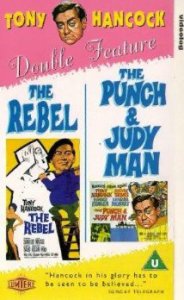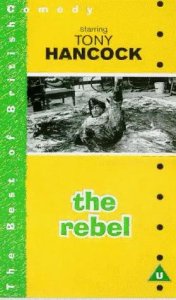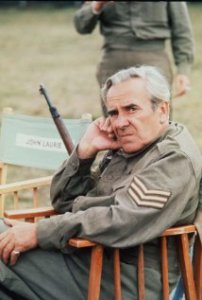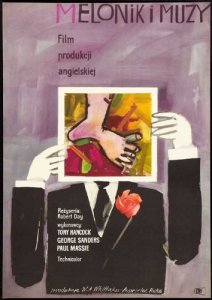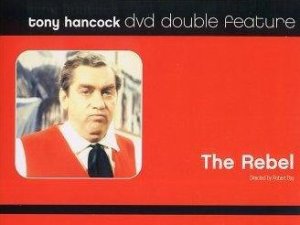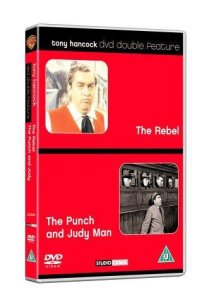The Rebel [Call Me Genius] *** (1960, Tony Hancock, George Sanders, Paul Massie, Dennis Price) – Classic Movie Review 2107
Director Robert Day’s 1960 comedy for the Associated British Picture Corporation is certainly Tony Hancock’s finest hour in the movies, the better of his two star vehicles made at the height of his extraordinary fame, before his popularity waned and the movie series was cancelled. He just has small roles in three other films.
He plays Anthony Hancock, a bowler-hatted London clerk and a frustrated artist who rebels against his monotonous, humdrum suburban commuter life and his boring his office job. He cashes in his premium bonds and goes off to Paris where he shares an artists’ garret with a frustrated but genuinely talented young artist (Paul Massie).
Unfortunately, though Hancock has a lot of enthusiasm, he has very little talent, a fact that isn’t wasted on the critics who scorn his work, but he still impresses as an emerging artist. Hancock becomes an abstract artist and his infantile paintings turn him into the darling of the Left Bank (‘So anyway, I said to Dali, “Salvador,” I said…’) where he is hailed as a genius.
East Cheam’s finest citizen from the radio and TV, ‘the lad ‘imself’, is taken up by the pseudo-intellectuals of the art world. But retribution waits round the corner when his flat mate Paul Massie shows everyone what’s really what.
Hancock is a delight, triumphing over a slightly dodgy script by his expert Hancock’s Half Hour radio show and TV writers Alan Galton and Ray Simpson with a marvellous portrayal of the self-delusion, anxiety and mock-modesty that was exactly his forte. It is unfortunate that Galton and Simpson’s satire of modern art and beatniks is extraordinarily feeble, but it doesn’t hold Hancock back too much.
And there is priceless support from John le Mesurier as the officious office manager, Irene Handl as the awful philistine landlady Mrs Crevatte, Dennis Price as Jim Smith and suavely sophisticated George Sanders as the waspish art dealer Sir Charles Brewer, all four performers bringing their caricatured roles to life.
The Rebel, or Call Me Genius as it was retitled in the US, had mixed reviews, but the public in Britain liked it, though in the America it was released in 1961 to great disappointment. Alas, Hancock’s very British humour and idiosyncratic comic timing just didn’t travel well.
Hancock said: ‘There were ideas I wanted to use but other people said no. When I saw it again six months afterwards I knew I’d been right. Next time I was going to have more control over my own ideas.’ Alas, next time was the ill-fated follow-up The Punch and Judy Man (1963).
Also in the cast are Margit Saad, Grégoire Aslan, Liz Fraser (waitress), Mervyn Johns (manager of the London Gallery), Peter Bull (manager of the Paris Gallery), Nanette Newman, Oliver Reed, John Wood, Marie Burke, Bernard Rebel, Sandor Elès and much-loved character actor Mario Fabrizi, who died while making The Punch and Judy Man.
The film’s cinematographer Gilbert Taylor, whose work also included The Punch and Judy Man, Star Wars, The Omen, Dr Strangelove, Ice Cold in Alex, A Hard Day’s Night and Alfred Hitchcock’s Frenzy, died at his home on the Isle of Wight on August 23 2013, aged 99.
Self-critical and plagued by alcohol and marital problems, Tony Hancock committed suicide by overdose in Australia on 25 June 1968, aged 44, leaving a note saying ‘Things seemed to go wrong too many times’.
Hancock just has small roles in three other films: Orders Are Orders (1954), Those Magnificent Men in Their Flying Machines (1965) and The Wrong Box (1966).
© Derek Winnert 2015 Classic Movie Review 2107
Check out more reviews on http://derekwinnert.com/

